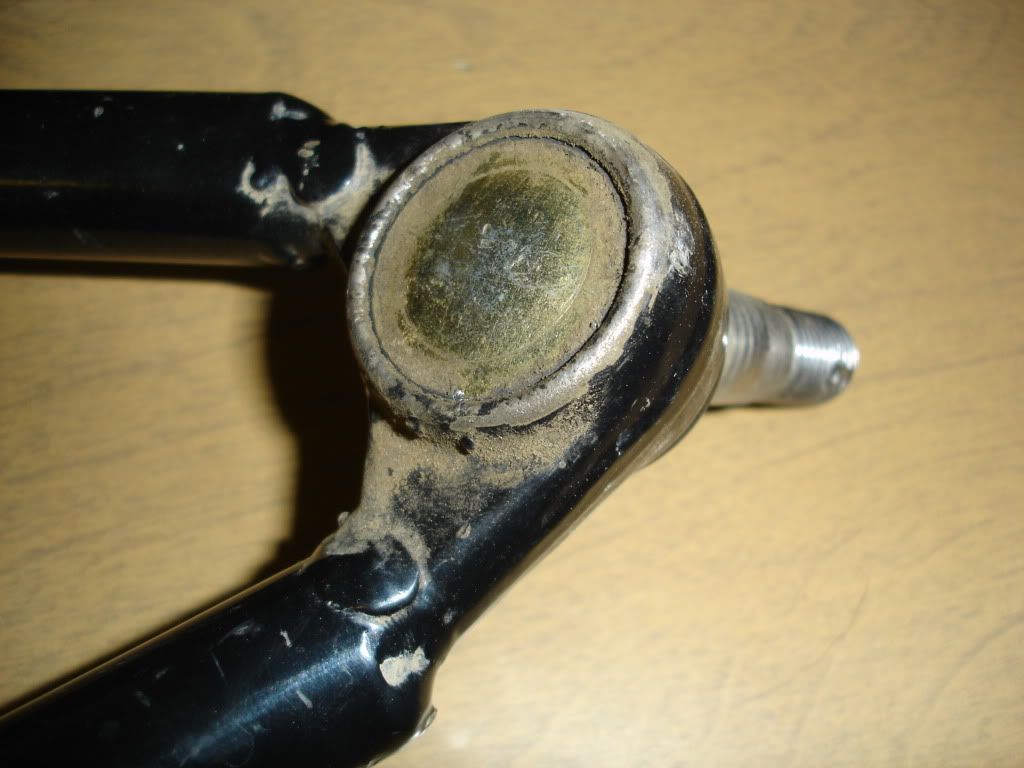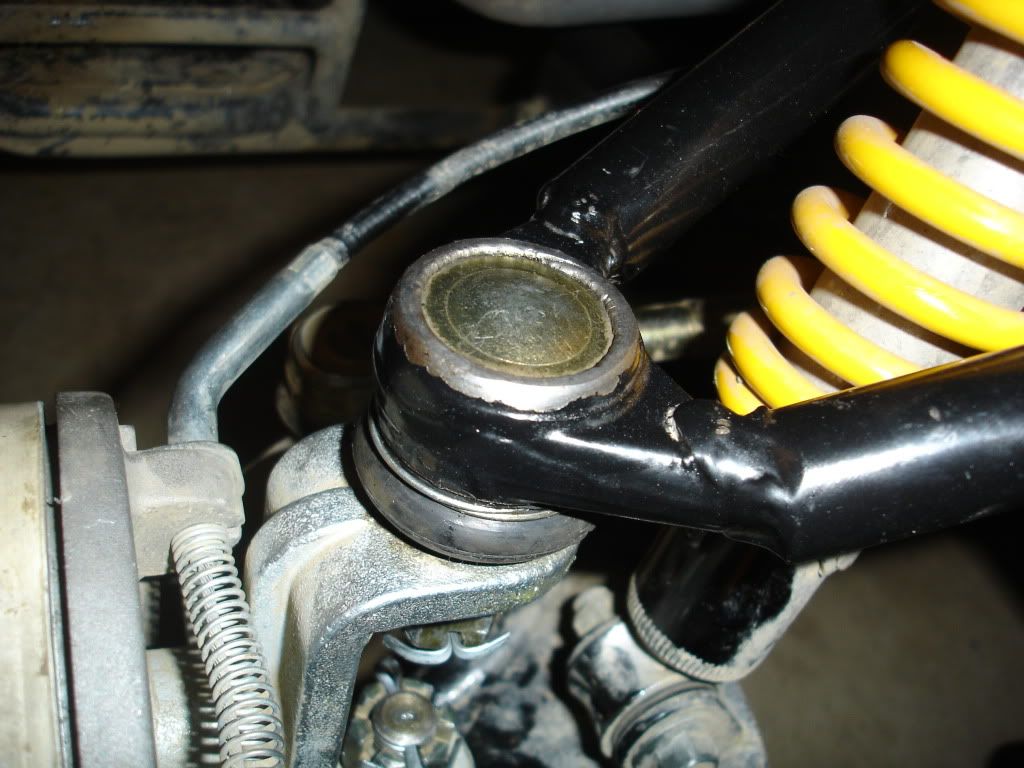|
|||||||

|
|
 |
|
|
Thread Tools | Search this Thread | Display Modes |
|
|||||||

|
|
 |
|
|
Thread Tools | Search this Thread | Display Modes |
|
|
#1 |
|
Join Date: Jul 2009
Posts: 19
|
Play in the front end, 2WD front ball joints / King Pins
Play in the front end, 2WD front ball joints / King Pins
Is this a common issue where there is very noticeable top/bottom play when one grabs a hold of the front tire/wheels? If these things are supposed to go over 40 mph, this is a very dangerous issue. How can this be fixed if it can? I have seen three used Chinese ATV, all with the same issue (KOMOTO 250, Baja Extreme Sports 300, Vbike 250). Lets fix these issues. |

|
|
|
#2 |
|
Join Date: Mar 2009
Location: Sardis, BC, Canada
Posts: 25,977
|
Before we can move forward, we need to know specifics. Do you have ball joints, or do you have kingpins?
__________________
Weldangrind "I figure I'm well-prepared for coping with a bike that comes from the factory with unresolved issues and that rewards the self-reliant owner." - Buccaneer |

|
|
|
#3 |
|
Join Date: Sep 2008
Location: Surrey, B.C., Canada
Posts: 2,185
|
Will take part and be very interested in this discussion. My 110 CC Mini Beast is quite loose on the front end as well. I had thought it was a bent rim or wheel bearing issue, as it has always been present, however just seems to be getting worse. Tried to tighten things up yesterday but seemed wobbly again tonight.
|

|
|
|
#4 |
|
Join Date: Aug 2008
Location: Tracy, California
Posts: 83
|
I have a 150cc quad. The front end has always been loose, and loosened some more as it wore in. It seems to have reached a point where it isn't worsening anymore, but I'm keeping an eye on it. It doesn't seem to affect the handling at all at the speeds I drive. I have a speedometer which records the top speed during every trip. The fastest I've ever gone is 27 MPH. I don't think I want to go 40+ MPH on my quad, and certainly not in rough terrain.
The other thing I notice is that the front wheels toe out rather severely as the suspension compresses. I think this is far worse for handling in rough situations than mere looseness. Bottom line is if your going to push the limits, the limit line is much higher on higher end machines. If your like me and only putt around enjoying the scenery then a little looseness is not a problem. I have to say, though, next time I'm shopping for a quad I'm going to be much more savvy. I'm going to look much more carefully at stability and suspension issues when choosing which quad I'm going to buy. |

|
|
|
#5 | |
|
Join Date: Mar 2009
Location: Sardis, BC, Canada
Posts: 25,977
|
Quote:
If the tie rods and control arms can't be modified or swapped, there is hope in shock relocation. If you put the front of the quad up on a jackstand and remove a front shock, you can raise and lower the front wheel by hand. As you move the wheel up and down, you'l notice the range in which the wheel remains straight. Once you are above or below that range, the wheel will begin to toe. The optimal shock location would put the wheel just at the bottom of the "good" range with a rider in the seat at rest. When the shock compresses, ideally it won't move the wheel up enough to toe again. Sometimes a longer shock is necessary to achieve correct geometry, and sometimes longer control arms are the only fix. Cars do the very same thing. Don't put up with loose ball joints and tie rod ends. Dismantle each one, carefully insert a grease needle under the boot, and inject grease from a grease gun until it oozes out. Then reinstall the joint and tighten the castle nut until slop is removed; be sure to use a new cotter pin on each joint (Princess Auto and Harbor Freight sell large assorted packs for peanuts). I know, more blah blah blah from Weldangrind. :roll:
__________________
Weldangrind "I figure I'm well-prepared for coping with a bike that comes from the factory with unresolved issues and that rewards the self-reliant owner." - Buccaneer |
|

|
|
|
#6 | ||
|
Join Date: Apr 2007
Location: Show Low Arizona
Posts: 2,889
|
Quote:
__________________
<br />2001 Suzuki DR200SE<br />1997 Suzuki RM250 YIKES<br />1995 Yamaha Breeze 125 daughters<br />1991 Honda XR80r Restored<br />maybe a 2003 Yamaha TTR90 |
||

|
|
|
#7 | ||
|
Join Date: Sep 2008
Location: Surrey, B.C., Canada
Posts: 2,185
|
Quote:
Mate you and I need to hang.  I think I might be able to learn quite a bit. I think I might be able to learn quite a bit.
|
||

|
|
|
#8 |
|
Join Date: Apr 2009
Posts: 330
|
Lol.......man. There needs to be more people like weldadgrind in Toronto. Lol.
|

|
|
|
#9 |
|
Join Date: Jul 2009
Posts: 19
|
The suspension has a ball joints on the ends of the upper and lower a-arms.
I suspect that the "new" factory ball joints are bad. |

|
|
|
#10 | |
|
Join Date: Mar 2009
Location: Sardis, BC, Canada
Posts: 25,977
|
Quote:
I tried to use my hydraulic press to further crimp the top of the socket, but I couldn't find a way to support such an odd shape in the press. I ended up holding the control arm and joint over a block of wood and working it with a ball pein hammer until the disc was firmly crimped in place (with the joint boot removed). I was a bit too agressive, but it worked great, and we've been riding it since 2006. Check out the photos; you can just barely notice a gap between the socket and the disc in the first pic. Before:  After: 
__________________
Weldangrind "I figure I'm well-prepared for coping with a bike that comes from the factory with unresolved issues and that rewards the self-reliant owner." - Buccaneer |
|

|
|
|
#11 |
|
Join Date: Jul 2009
Posts: 19
|
The part is similar, the bike is a different brand.
All four joints have the issue. In my case, the ball may have a lot of slop in the socket, like a worn out tie rod end. I will have to check things out later in the day today. |

|
|
|

|
 |
|
|